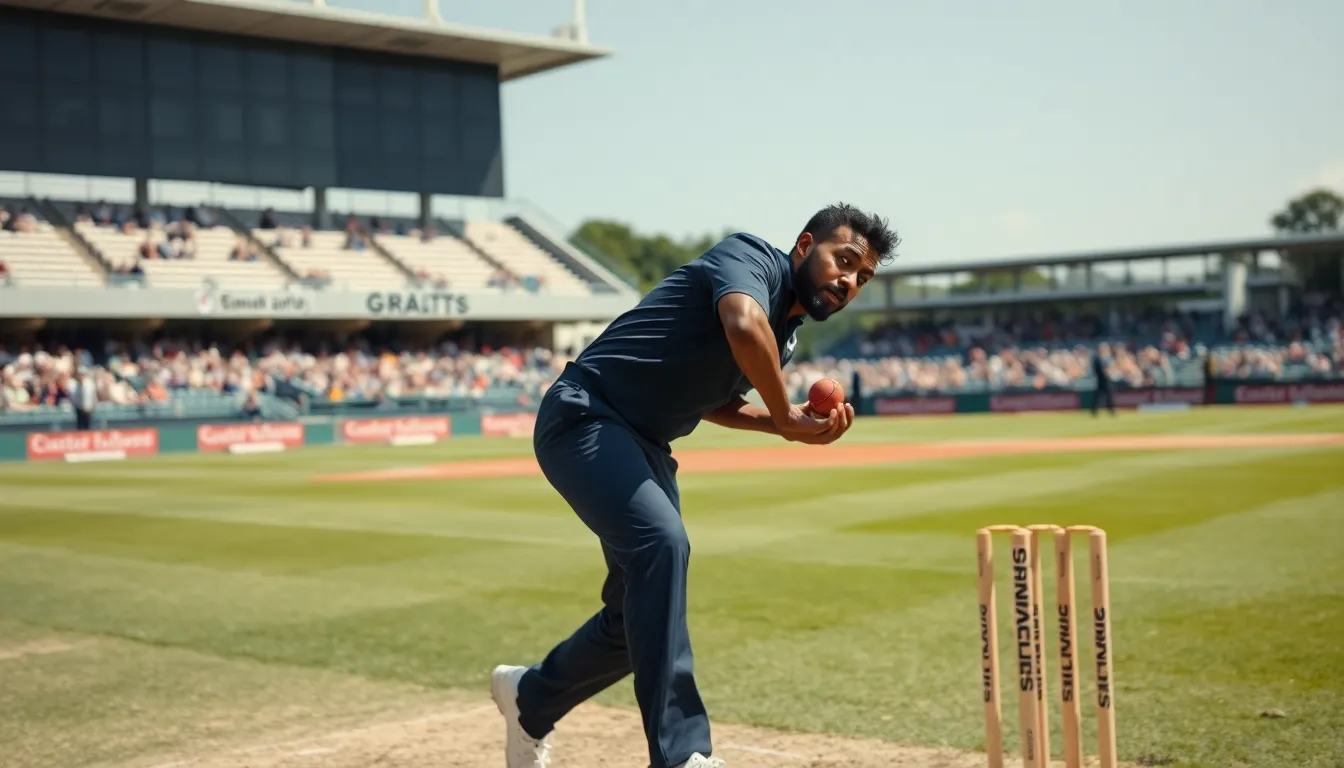Ever wondered what it’s like to be smashed by a ball flying at over 100 miles per hour? Fast bowlers have been the thrill of cricket, darting down the pitch with the kind of speed that makes batters second-guess their life choices. They not only redefine the game but also bring an unparalleled excitement to the field. From legendary figures to the current heavyweights, let’s jump into the electrifying world fastest bowler.
Table of Contents
ToggleIntroduction to Fast Bowling

Fast bowling is a form of bowling in cricket that aims to deliver the ball at high speeds, challenging batters’ reflexes and skills. These bowlers possess unique techniques and athleticism, making them some of the most exciting athletes on the pitch. Fast bowlers typically achieve speeds exceeding 90 mph, with some even surpassing 100 mph. Their deliveries can create intense pressure on batters, leading to thrilling matches and memorable moments.
The appeal of fast bowling combines with the artistry of crafting an impressive delivery, providing fans with breathtaking displays of skill and precision.
History of Fast Bowling
The saga of fast bowling dates back to the origins of cricket. In its early days, bowlers used underarm techniques, gradually evolving into the overarm styles seen today. Pioneers like Fred Trueman, who bowled for England in the 1950s, helped define fast bowling’s modern era.
As the 20th century progressed, bowlers like Dennis Lillee and Malcolm Marshall showcased extraordinary skills, pushing the limits of speed and technique. The rivalry between nations reflected the evolution of fast bowling, with each era bringing unique talents and unforgettable performances. One cannot discuss fast bowling history without mentioning Pakistan’s Wasim Akram and India’s Kapil Dev, whose contributions have left an indelible mark on the sport.
Criteria for Measuring Speed
Measuring a bowler’s speed involves using advanced technology, chiefly the radar gun, which captures the ball’s velocity as it leaves the bowler’s hand. But it’s not just about speed: the effectiveness of a fast bowler also relies on their ability to deliver accurate, deceptive deliveries.
Famous Fast Bowlers Throughout History
Some speedsters, such as Shoaib Akhtar, known as the “Rawalpindi Express,” shocked the world when he clocked 161.3 km/h (100.23 mph) in a 2003 match. Others like Glenn McGrath blended speed with accuracy, making them legends in their own right, showcasing that it’s not just the numbers, but the impact that makes a bowler unforgettable.
Current Record Holders
In today’s cricketing landscape, a few names continue to emerge as the epitome of speed. Currently, the record for the fastest delivery is held by Shoaib Akhtar. But, bowlers like Dale Steyn and Mitchell Starc are also recognized for their extraordinary pace, consistently clocking over 150 km/h (93 mph). Their performances in competitive cricket demonstrate that while records evolve, the art of fast bowling continues to thrive, pushing the limits of what is achievable.
Impact of Fast Bowlers on the Game
Fast bowlers bring a unique dynamic to cricket, changing the game’s tempo and shifting momentum. They instill fear in batters, forcing them to adopt cautious approaches, and can dramatically alter the outcome of matches. The excitement generated by a good fast bowler can energize a crowd, making every delivery a spectacle. Legendary encounters, where a bowler takes a flurry of wickets, create unforgettable narratives within the sport’s folklore.
Also, the prominence of fast bowling has led to advancements in protective gear, making the sport safer without diminishing the spirit of competition.
Training and Technique of Fast Bowlers
Training to be a successful fast bowler demands rigorous discipline and specific techniques. It involves a blend of physical conditioning, skill development, and strategic thinking. Fast bowlers often focus on strength training to enhance their speed and injury prevention. Drills focus on perfecting the run-up, delivery stride, and follow-through, ensuring that every aspect is fine-tuned for optimal performance.
Coaches play a crucial role in this training. They emphasize not just the need for speed but also the importance of maintaining accuracy and control. Visualizations and mental conditioning are increasingly part of fast bowling training, helping bowlers prepare for high-pressure situations during matches.


